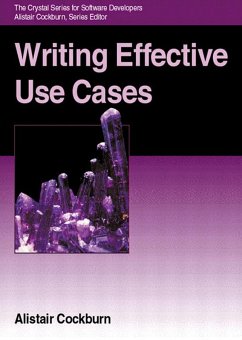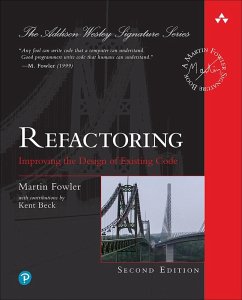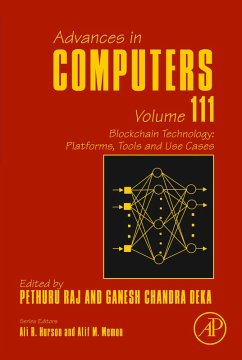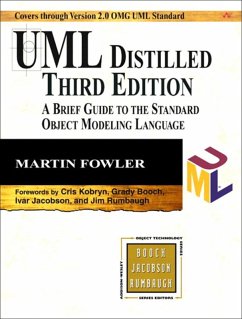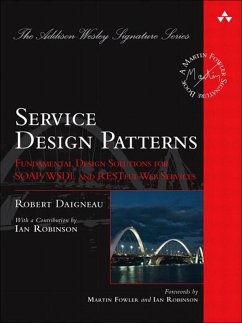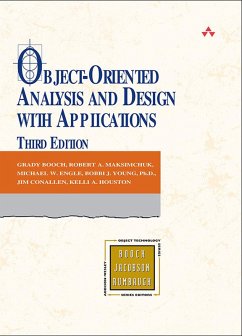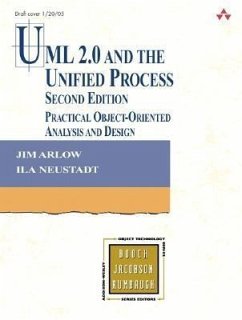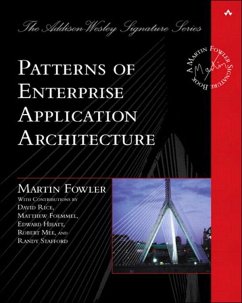
Writing Effective Use Cases (eBook, ePUB)
Versandkostenfrei!
Sofort per Download lieferbar
31,95 €
inkl. MwSt.
Weitere Ausgaben:

PAYBACK Punkte
16 °P sammeln!
Writing use cases as a means of capturing the behavioral requirements of software systems and business processes is a practice that is quickly gaining popularity. Use cases provide a beneficial means of project planning because they clearly show how people will ultimately use the system being designed. On the surface, use cases appear to be a straightforward and simple concept. Faced with the task of writing a set of use cases, however, practitioners must ask: "How exactly am I supposed to write use cases?" Because use cases are essentially prose essays, this question is not easily answered, a...
Writing use cases as a means of capturing the behavioral requirements of software systems and business processes is a practice that is quickly gaining popularity. Use cases provide a beneficial means of project planning because they clearly show how people will ultimately use the system being designed. On the surface, use cases appear to be a straightforward and simple concept. Faced with the task of writing a set of use cases, however, practitioners must ask: "How exactly am I supposed to write use cases?" Because use cases are essentially prose essays, this question is not easily answered, and as a result, the task can become formidable.
In Writing Effective Use Cases, object technology expert Alistair Cockburn presents an up-to-date, practical guide to use case writing. The author borrows from his extensive experience in this realm, and expands on the classic treatments of use cases to provide software developers with a "nuts-and-bolts" tutorial for writing use cases. The book thoroughly covers introductory, intermediate, and advanced concepts, and is, therefore, appropriate for all knowledge levels. Illustrative writing examples of both good and bad use cases reinforce the author's instructions. In addition, the book contains helpful learning exercises--with answers--to illuminate the most important points.
Highlights of the book include:
With this book as your guide, you will learn the essential elements of use case writing, improve your use case writing skills, and be well on your way to employing use cases effectively for your next development project.
In Writing Effective Use Cases, object technology expert Alistair Cockburn presents an up-to-date, practical guide to use case writing. The author borrows from his extensive experience in this realm, and expands on the classic treatments of use cases to provide software developers with a "nuts-and-bolts" tutorial for writing use cases. The book thoroughly covers introductory, intermediate, and advanced concepts, and is, therefore, appropriate for all knowledge levels. Illustrative writing examples of both good and bad use cases reinforce the author's instructions. In addition, the book contains helpful learning exercises--with answers--to illuminate the most important points.
Highlights of the book include:
- A thorough discussion of the key elements of use cases--actors, stakeholders, design scope, scenarios, and more
- A use case style guide with action steps and suggested formats
- An extensive list of time-saving use case writing tips
- A helpful presentation of use case templates, with commentary on when and where they should be employed
- A proven methodology for taking advantage of use cases
With this book as your guide, you will learn the essential elements of use case writing, improve your use case writing skills, and be well on your way to employing use cases effectively for your next development project.
Dieser Download kann aus rechtlichen Gründen nur mit Rechnungsadresse in A, B, BG, CY, CZ, D, DK, EW, E, FIN, F, GR, HR, H, IRL, I, LT, L, LR, M, NL, PL, P, R, S, SLO, SK ausgeliefert werden.




